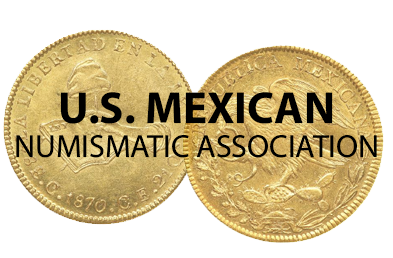The One Peso 1984 "ra" Engraver Initials
by Carlos Abel Amaya Guerra
In 1983 the Mexico mint produced a stainless steel one peso coin as a pattern. As in the previous one peso series it had the bust of Morelos.


KM-496 1984 $1 no engraver's initials
The circulation production began in 1984, and 722,802,000 coins were struck at the Legaria mint facility. These were similar to the 1983 patterns but if you observe under the lapel area, near the neck of the military coat of Morelos, some coins have the initials "ra".


KM-496 1984 $1 engraver's initials
In a sample of 3,232 one peso 1984 coins I found 57.4 % of the coins without the initials and 42.6% of the coins with the initials. How could this happen?
Once a year in the mint, the master hub is used to make a master die. The master hub is placed in a hydraulic press and rested against another steel bar. After the application of hydraulic pressure, the coin design is impressed into the master die as a depressed or incuse design. The master die is given to an engraver who will now carve the appropriate date into it if required. As necessary, touch-ups will be done to correct any minor discrepancies. The master die will become the standard for all coinage dies (for that denomination) for that year. When the date has been applied, the master die is machined to create the correct shaft shape and to trim any excess metal from it. The master die containing the date is now used to make the working hub. The same procedure as before is used. The master die is placed against a steel bar and pressure is hydraulically applied to impress the master die design into that steel bar. When this has been done, a working hub has been produced. This too is tempered and hardened. The working hub will be a positive design (raised relief) complete with date, and have the appearance of the eventual coin to be produced. The working hub is the final tool which is used to produce working dies. The same hydraulic press system is used, and the working hub produces hundreds of working dies.
I first believed that the engraver put in the initials "ra" when he was carving the date of the master die. At that time, one of the engravers in the Casa de Moneda de Mexico was Rodolfo Alvarado, which corresponds to the "ra" initials. Either Alvarado or one of his fellow engravers inserted these initials. I initially thought the working hub had these initials and then transfers them to the working dies, but a closer look at the coins reveals there are several types of the "ra" initials. There are some that are bigger than others, etc.
It is more probable that one mint worker put these initials on the working dies. Maybe the engraver was remorseful half way through the production and erased the initials or another worker saw them and he erased them on the working dies. The coins without initials had the area polished. It is very rare to find a coin with flat surface as the 1983 or 1985 coins. Also, I found many kinds of coins with partially erased initials in different grades.
I have not found any "ra" one-peso coins of the 1985-year. All of these coins do not havethe under lapel area polished and they look normal, with a flat surface, as in the 1983 pattern.
